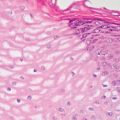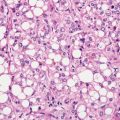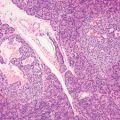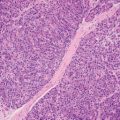1 Reparative/Posttraumatic Neoplastic Mimics Developmental Neoplastic Mimics “Functional” Neoplastic Mimics “Pseudotumor” is an indefinite term that has typically been used to indicate the presence of a mass, which is felt to represent a neoplasm at some level of observation. In most circumstances it is a misnomer, because a mass actually exists; in that situation, the term “neoplastic mimics” or “pseudoneoplasm” would be more appropriate. However, there may still be circumstances in which the term “pseudotumor” is appropriately used; some of those scenarios are presented below. Nonetheless, this discussion is directed to those lesions that are best designated as “neoplastic mimics.” They are typically represented by masses that have been biopsied or resected, but the microscopic slides do not show the presence of a neoplastic process. From where did the designation of “pseudotumor” arise? Ophthalmology has been cited as the first specialty in which the literature used the descriptor of “pseudotumor” (1); in 1930, Birch-Hirschfeld employed it in discussing orbital lesions that had produced proptosis (2). Thereafter, other authors appended such adjectives as “inflammatory,” “lymphoid,” “granulomatous,” “xanthomatous,” and “fibrous” in attempts to subdivide “pseudotumors” into pathologically recognizable subgroups (3). The word “pseudotumor” has also been synonymized with such alternatives as “postinflammatory tumor” (4,5), “histiocytoma” (6), “plasma cell granuloma” (7–9), “mast cell granuloma” (10), “xanthoma” (11–14), “xanthogranuloma” (15), “plasma cell/histiocytoma complex” (16), and, in some reports (17), “sclerosing hemangioma” as well. This brief introductory discussion further considers definitions and presentations of “pseudotumors” or, in a more general term “neoplastic mimics.” Because this discussion is especially aimed at pathologists, it will generally be based on the morphologic characteristics of the lesions being considered. The visual images of the same cases that are seen by internists, surgeons, radiologists, and pathologists are potentially quite dissimilar. For example, the surgeon may believe that he or she has identified a palpable mass in the breast, but the radiologist may see little or nothing on mammogram. Similarly, a pathologist examining a fine needle aspiration biopsy of the putative lesion may find nothing that is abnormal. In this scenario, the second and third physicians may question the claims of the surgeon, but unless they physically examine the patient themselves, they can never really determine whether a “tumor” is actually present at a clinical level of assessment. Nonetheless, the palpable lesion is certainly a potential neoplasm in the mind of the surgeon. Radiologists and pathologists are subject to the same tricks of nature. For example, it is well known that hemorrhages in hemophiliac patients may simulate neoplasms in radiographs, although none is seen through the microscope after excision (18,19). Comparable comments apply to the roentgenographically defined images of “tumefactive biliary sludge” (20), duodenal ampullary “mucosal rosettes” (21), tumor-like musculoskeletal variations (22), and pulmonary “rounded atelectasis” (23–26). From the perspective of the pathologist, adnexal nevi of the skin (27–29), cutaneous reactions to Monsel’s reagent (a styptic solution) (30,31), and the presence of the organ of Chievitz (a histologic imitator of squamous carcinoma) in biopsies of the oral mucosa (32–36) are singular neoplastic mimic conditions with no associated clinical or radiographic aberrations. Only by face-to-face collegial interaction can all information on such cases be integrated, to yield a clear delineation of the processes or anatomic variations in question (37). Indeed, practically speaking, interpretative disagreement between specialists—as stressful as that can be—is often the principal clue to the existence of a neoplastic mimic condition. A considerable number of “pseudotumors” can simulate neoplasms on all levels of analysis— clinical, radiologic, and pathologic— and they consequently represent particular diagnostic pitfalls which can lead to therapeutic misdirection. Those are the entities to which this book is principally directed. In addition, other pathologic conditions are included that histopathologists alone—and not clinicians or radiologists—may uniquely misinterpret as neoplastic in nature. Certain caveats must be stated in addressing this general topic. First, the lesions known as “inflammatory pseudotumors” (IPs) are generally recognized as representing true neoplasms (“inflammatory myofibroblastic tumors”) although sometimes considerable difficulty may still be encountered in separating them from selected inflammatory conditions (38). Similar comments are applicable to angiomyolipomas, certain melanocytic nevi, and proliferative but reactive lymphoid lesions (“pseudolymphomas”). After the application of such techniques as immunohistochemistry, cytogenetics, and gene rearrangement analyses, the majority of true neoplasms in these lesional groups can be defined correctly. Furthermore, as more knowledge continues to accrue from those studies, the classification of “neoplastic mimics” will undoubtedly undergo continuing revision. Virtually all topographic sites in the human body may play host to lesions that simulate neoplasms. Perhaps because they are especially sensitive to etiologic influences that cause neoplastic mimics, some locations appear to be particularly prone to them. Principal examples are the lungs, urinary tract, and gut. In addition, neoplastic mimic processes are partially overlapping and partly distinctive as seen in various anatomic sites. That observation may again reflect the relative influences of different pathogenetic factors on different tissues, but other variables probably have an effect as well. The following sections consider “neoplastic mimics” as related to their putative causal categories. True IP has an unknown cause in most cases, and is most commonly seen in the pulmonary parenchyma (38–61). It may conceivably represent a localized remnant of unresolved or organizing pneumonia (62,63). Still other conditions are “quasi-neoplastic,” in that they feature etiologically unknown, and, to some extent, autonomous, cellular proliferations in various locations without a definable stimulus. Radial scar of the breast (78–81); urethral (prostatic utricular) polyp (82); fibroepithelial polyp of the urinary bladder (83); some “tumefactive fibroinflammatory lesions” of soft tissue (84,85); metaphyseal fibrous defects (“nonossifying fibromas”) of bone (86,87); and aneurysmal bone cysts (88–92) belong to that category. They differ biologically from true neoplasms because they are self-limited or even spontaneously-regressing. Other neoplastic mimic processes do have a linkage with underlying disease processes, but the ultimate etiology of the latter conditions can be idiopathic. Proliferative Paget’s disease of bone (osteitis deformans) (93–96), tumefactive plaques of active multiple sclerosis (97–100), and lymphoma-like Hashimoto’s thyroiditis (101,102) are representative examples. Exaggerated host responses to tissue insults arguably comprise the most common mechanisms underlying the formation of neoplastic mimics. In many of those instances the injury may have been trivial and subclinical—to wit, unnoticed by the patient—and the resulting reparative process might therefore be regarded initially as idiosyncratic. That situation likely applies to nodular fasciitis (103,104), proliferative fasciitis and myositis (105–108), giant-cell reparative granuloma of bone (109–112), fibrohyaline pleuritis (113,114), and xanthogranulomatous inflammation in several sites (115–120). Still other pseudoneoplasms are caused by documented episodes of injury, but again with an amplified and idiosyncratically robust reparative response. Pseudocarcinomatous (“pseudoepitheliomatous”) hyperplasias of the skin (121,122), acroangiodermatitis (123), myositis ossificans (124,125), “atypical (ischemic) decubital fibroplasia” (126–129), tumefactive synovial chondrometaplasia (130), necrotizing sialometaplasia (131–133), gliosis in the central nervous system (134), nephrogenic urothelial metaplasia (135), inflammatory polyps of the anorectal region (136), colitis cystica profunda (137), florid reactive mesothelial proliferations (138–141), tumor-like chronic pancreatitis (142), therapy-induced tissue reactions (143–146) (which are simultaneously reparative and iatrogenic, causally), and polypoid-papillary cystitis (147) are all examples of lesions in this category. Why some individuals develop exaggerated repair mechanisms and others do not is an open question at present. The most straightforward group of neoplastic mimics relates to individual abnormalities in development or, alternatively, ignorance on the part of pathologists regarding the details of normal organogenesis and embryology. Choristomas (148), hamartomas (149–153), and cutaneous nonmelanocytic nevi are members of the first of those categories, because they are classified as flaws of morphogenesis. Tissue remnants or heterotopias relating to embryologic development constitute another large subgroup in the same cluster, including examples of vaginal adenosis (154–156), cervical mesonephric remnants (157), “adenomyoma” of the duodenum (158), cutaneous “rudimentary meningocele” (159), and glial heterotopias (160,161). On the other hand, the juxtaoral organ of Chievitz is a normal structure rather than an embryologic vestige or developmental anomaly (32–36). However, it is so uncommonly seen in mucosal biopsies that some observers may fail to recognize it and confuse this inclusion with a malignant neoplasm (squamous carcinoma). Malformations related to congenital or Mendelian syndromes also may resemble neoplasms. The tumefactive lesions of osseous fibrous dysplasia (94,109,162,163) and the paraventricular glial nodules of tuberous sclerosis (161) are representatives. Some neoplastic mimics are caused by a dysfunctional pathophysiologic state, often relating to endocrine abnormalities. “Dominant” nodules often arise in parenchymal hyperplasias of the thyroid or parathyroid glands (102) and those lesions can simulate adenoma or even carcinoma microscopically. Comparable comments apply to localized unilateral nodular adrenocortical hyperplasia (164). Other neoplastic mimic conditions with endocrine underpinnings include prostatic hyperplasias (165,166), focal nodular hyperplasia of the liver (167–169), ovarian stromal hyperthecosis (170), the Arias-Stella reaction in epithelium of the gynecologic tract (171–173), osteitis fibrosa cystica (“brown tumor” of hyperparathyroidism) (174–178), and uterine cervical microglandular hyperplasia (179). Several medical procedures may produce subsequent tissue reactions that imitate the appearance of neoplasms. Most are reparative in nature and could also have been included in the corresponding section above. However, because of their clearly iatrogenic nature, they deserve special recognition. Instrumentation or surgery of the genitourinary tract may cause an idiosyncratic tumefaction comprising variably-atypical spindle cells, known simply as “postoperative spindle cell nodules” (180–186). In the same vein, application of the iron salt-based cutaneous styptic, Monsel’s solution, has caused idiosyncratic cellular proliferations resembling spindle-cell tumors of the skin and uterine cervix (30,31). Other neoplastic mimics in this category may be able to imitate an infiltrative or in situ neoplasm. These include urothelial cytotoxicity caused by cyclophosphamide, simulating in situ urothelial carcinoma (187); epithelial atypia in the breast after chemotherapy (188); and florid vaginal adenosis in women whose mothers took diethylstilbestrol during pregnancy (155). Iatrogenic neoplastic mimics are particularly problematic for pathologists (189), because we often are not supplied with pertinent—and sometimes crucial—information concerning prior treatments or interventions. Particularly because of Acquired Immunodeficiency Syndrome (AIDS), tissue reactions to several infectious pathogens have been increasingly recognized that are capable of simulating neoplasms. Conjointly cytopathic and reparative responses to infection with cytomegalovirus, Epstein-Barr virus (EBV), papovavirus, selected species of mycobacteria, and other bacilli can produce proliferations in several organ systems with a histological likeness to sarcomas, gliomas, or lymphomas (71,190–194). That phenomenon is not restricted to individuals with AIDS. It is also the basis for malakoplakia (195–199), “histoid” cutaneous infections caused by Mycobacterium leprae (200,201), and florid lymphoid hyperplasia of the terminal ileum in patients infected with Yersinia (202). As outlined in the foregoing material, neoplastic mimic proliferations are potentially encountered in virtually all the topical areas of anatomic pathology, including cytopathology. Thus, they represent a truly-protean challenge with many possible implications for patient care and case outcome. All pathologists must bear those facts in mind during day-to-day practice in order to guard against misinterpretations. Table 1.1 presents a synopsis of this discussion in tabular form, separated into organ systems. This volume, Neoplastic Mimics in Gastrointestinal and Liver Pathology, provides comprehensive descriptions, discussion, and images of the lesions summarized in the table as pertinent to the gastrointestinal tract, hepatobiliary tract, and pancreas. For similar coverage of the other systems and categories of lesions shown in the following table, the reader is referred to the other volumes of the Neoplastic Mimics series of atlases.
Neoplastic Mimics: General Considerations
 PHILOSOPHICAL AND PRACTICAL ISSUES
PHILOSOPHICAL AND PRACTICAL ISSUES
 TOPOGRAPHIC DISTRIBUTION AND BIOLOGIC NATURE OF NEOPLASTIC MIMICS
TOPOGRAPHIC DISTRIBUTION AND BIOLOGIC NATURE OF NEOPLASTIC MIMICS
INTRODUCTION
PHILOSOPHICAL AND PRACTICAL ISSUES
TOPOGRAPHIC DISTRIBUTION AND BIOLOGIC NATURE OF NEOPLASTIC MIMICS
 IDIOPATHIC NEOPLASTIC MIMICS
IDIOPATHIC NEOPLASTIC MIMICS
 REPARATIVE/POSTTRAUMATIC NEOPLASTIC MIMICS
REPARATIVE/POSTTRAUMATIC NEOPLASTIC MIMICS
 DEVELOPMENTAL NEOPLASTIC MIMICS
DEVELOPMENTAL NEOPLASTIC MIMICS
 “FUNCTIONAL” NEOPLASTIC MIMICS
“FUNCTIONAL” NEOPLASTIC MIMICS
 IATROGENIC NEOPLASTIC MIMICS
IATROGENIC NEOPLASTIC MIMICS
 INFECTIOUS NEOPLASTIC MIMICS
INFECTIOUS NEOPLASTIC MIMICS
Stay updated, free articles. Join our Telegram channel

Full access? Get Clinical Tree









